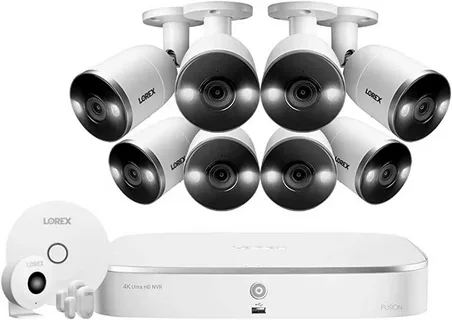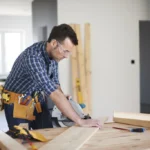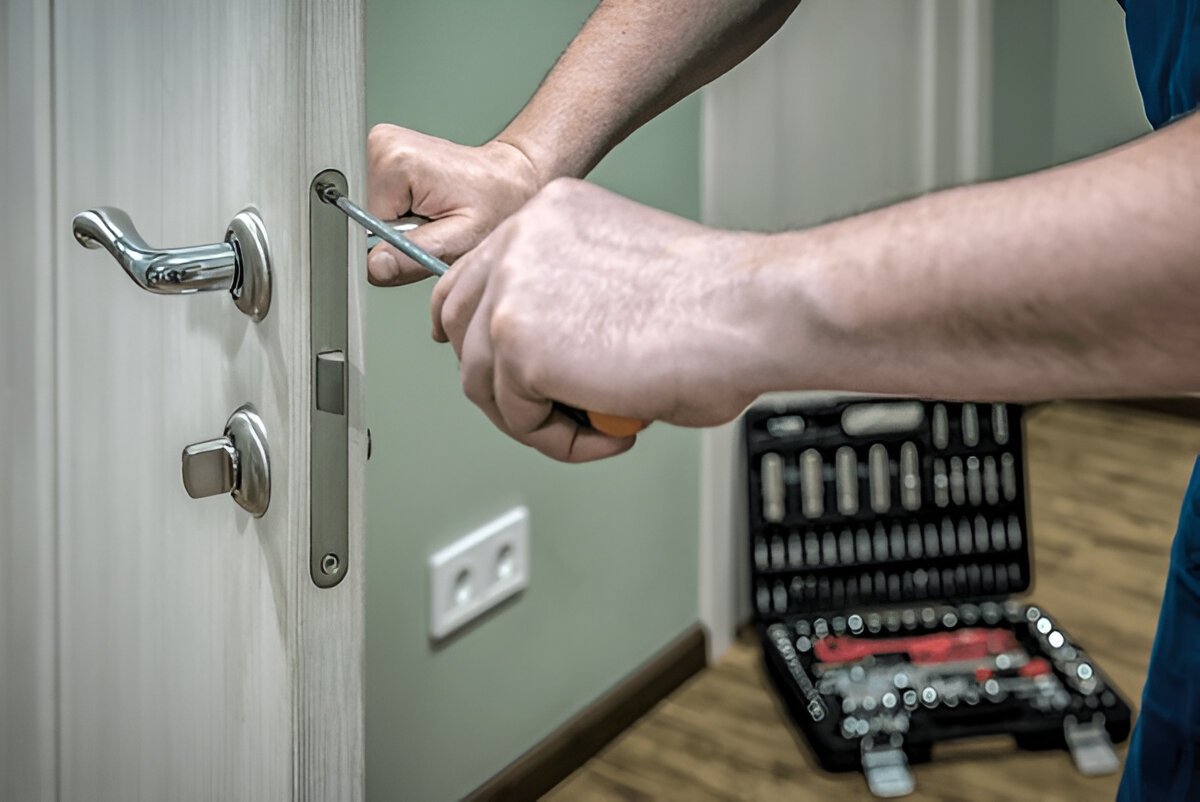An NVR (Network Video Recorder) system is an essential component for modern surveillance setups, offering security solutions that capture and store footage from your cameras. Whether you’re setting up an NVR system for the first time or need NVR installation and repair for an existing setup, understanding the key components required for installation and maintenance is crucial. Proper installation ensures that the system runs efficiently, while timely repairs can keep your system functioning smoothly over time.
From the NVR to the cameras, power supplies, and storage, each component is crucial for the system’s functionality. In this post, we’ll explore the essential parts of an NVR system, covering installation and repair to ensure a smooth experience. Whether you’re setting up a new system or troubleshooting an existing one in Decatur GA, Safe Dwelling Security LLC is here to help. Contact us for expert services tailored to your security needs.
Key Components of an NVR System
An NVR system is composed of several components that work together to record, store, and manage video surveillance footage. Whether you’re looking to install or repair the system, the following are the core components that make up a functional NVR system:
NVR (Network Video Recorder)
The NVR itself is the heart of your surveillance system. It’s responsible for receiving and recording video footage from the IP cameras connected to it. NVRs vary in features and storage capacities, so choosing the right model is crucial for a successful setup. When installing or repairing an NVR, ensure that the device is compatible with the cameras you plan to use and the amount of storage required.
- Installation Tip: Ensure your NVR has enough storage capacity for the number of cameras and the resolution of the footage you need to store.
- Repair Tip: If the NVR is malfunctioning, check for software updates, firmware issues, or hardware damage.
IP Cameras
The cameras are the eyes of the surveillance system, capturing live footage that gets sent to the NVR. IP cameras are typically chosen for their high-definition resolution, ease of installation, and remote accessibility. The installation of these cameras is critical as they need to be positioned correctly for optimal coverage. If you’re repairing a system, make sure the cameras are properly aligned and powered.
- Installation Tip: Choose cameras with the appropriate resolution (1080p, 4K, etc.) for your security needs.
- Repair Tip: If the camera isn’t recording or has a poor image quality, check the camera’s lens, connections, and settings.
Network Switch or Router
A network switch or router is used to connect your NVR to the IP cameras and the internet. The network switch provides the necessary data transfer between the components, allowing the cameras to send footage to the NVR. For efficient installation and repair, ensure that the router or switch has sufficient bandwidth to handle the data from multiple cameras.
- Installation Tip: Ensure your network equipment supports the data throughput required by your cameras and NVR.
- Repair Tip: If you experience network latency or disconnection issues, test the router’s connections and check for firmware updates.
Cabling (Ethernet Cables)
Cabling is essential for connecting your IP cameras to the NVR and the network switch. Ethernet cables are often used for wired setups, offering stable, high-speed data transmission. The length and quality of the Ethernet cables can impact the system’s overall performance.
- Installation Tip: Use high-quality Cat 5e or Cat 6 Ethernet cables for better signal transmission and reduced interference.
- Repair Tip: If the cameras are losing signal or experiencing slow data transmission, check the condition of your cables and replace any damaged ones.
Power Supply (PoE or Dedicated Power)
Powering your IP cameras and NVR is essential for a functioning surveillance system. PoE (Power over Ethernet) is a popular solution, as it allows the Ethernet cables to also carry power to the cameras. If you’re installing or repairing an NVR system, ensure that the power supply is reliable.
- Installation Tip: PoE switches can simplify the installation process by reducing the number of cables required.
- Repair Tip: If the system isn’t receiving power, inspect the power supply, cables, and connections for faults.
Storage Device (Hard Drive)
A hard drive is where the NVR stores recorded video footage. The size and speed of the hard drive will depend on the number of cameras, the resolution of the footage, and the retention period. When installing or repairing the system, choosing the right storage solution is critical to ensuring long-term functionality.
- Installation Tip: Choose a hard drive with adequate storage space and read/write speed for optimal performance.
- Repair Tip: If the system is not recording properly, check the hard drive for errors and replace it if necessary.
Monitor
The monitor is where you’ll view the live footage and recorded video. Some NVRs come with built-in screens, but others require an external monitor. The monitor should have sufficient resolution to display clear footage, especially if you’re working with high-definition cameras.
- Installation Tip: Make sure the monitor’s resolution matches the video output resolution of the NVR for clear viewing.
- Repair Tip: If the monitor is showing a black screen or blurry footage, check the connections and settings.
Installation and Repair Considerations
When setting up or repairing your NVR system, it’s crucial to consider the placement and configuration of each component. Proper installation and regular maintenance can prevent many common issues and ensure the system runs smoothly. Here are some tips for both:
- Installation Tip: Always follow the manufacturer’s instructions for setting up each component of the system.
- Repair Tip: If you encounter persistent issues, don’t hesitate to call a professional for diagnostics and repairs.
Conclusion
A properly installed and maintained NVR system can offer robust security and reliable video surveillance. Understanding the essential components, like the NVR unit, cameras, cables, and power supply, is key to a successful setup. Whether you’re installing a new system or repairing an existing one, these components ensure that your NVR system delivers high-quality footage and peace of mind.
FAQs
- How long does NVR footage stay on the hard drive?
The length of time NVR footage is stored depends on the hard drive’s size and the number of cameras. Typically, footage is stored for 7-30 days. - Can NVR systems work without internet access?
Yes, NVR systems can record footage locally without an internet connection. However, you’ll need the internet for remote access and cloud storage. - What’s the difference between NVR and DVR?
NVR systems work with IP cameras and store footage digitally over the network, while DVR systems use analog cameras and require coaxial cables for data transmission. - Can I add more cameras to my NVR system?
Yes, most NVRs allow you to add more cameras, but be sure to check the system’s maximum camera capacity before expanding. - How often should I maintain my NVR system?
Regular maintenance, such as checking connections, updating firmware, and cleaning components, should be done every 3-6 months to ensure optimal performance.



